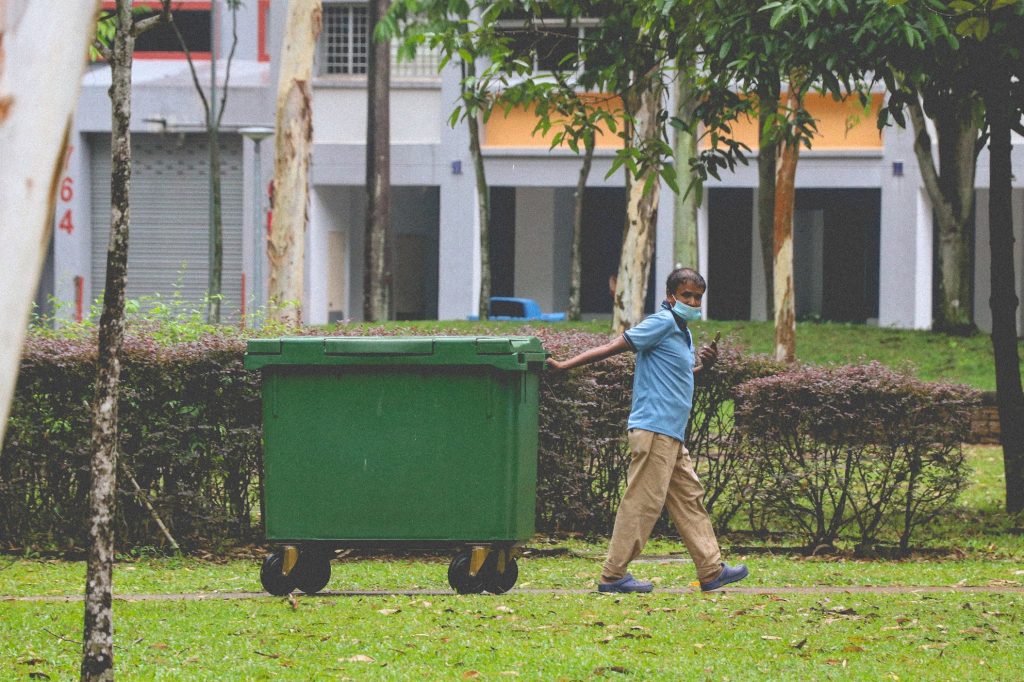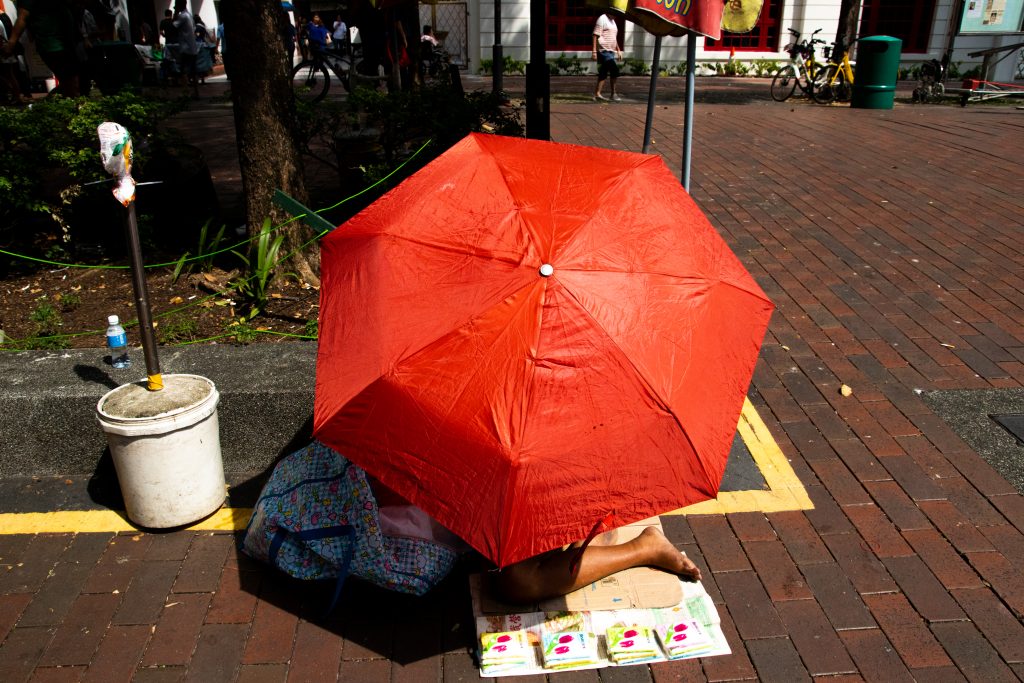Top image: Stephanie Lee / RICE File Photo
We often disagree on what a basic standard of living in Singapore looks like. Some point to a minimal standard of living; food on the table, a roof over our heads, and some clothes on our backs are what’s needed. Questions about quality can come later.
Others incorporate abstract ideas into that basic standard of living. They pay equal attention to principles like respect and independence, as well as tangibles like food and housing.
Nowhere is this difference in opinion clearer than a recent disagreement of ideals between academics and government ministries. They also disagree on what a basic standard of living should look like in Singapore.
A study by the Lee Kuan Yew School of Public Policy (LKYSPP) and Nanyang Technological University (NTU) finds that a family of four with two children, one a pre-teen and the other a teenager, needs at least $6,693 monthly to afford a basic standard of living.
According to the MIS report, about 30 percent of working households in Singapore still earn less than the required amount to meet basic needs. In other words, it’s a worrying trend.
It took three ministries to produce a joint response to the study titled ‘Minimum Income Standards 2023: Household Budgets in a Time of Rising Costs’.
The Ministry of Finance, Ministry of Manpower, and Ministry of Social and Family Development took issue with the study’s policy recommendations, methodology, and data. At the core of it, the ministries disagreed with the MIS team on its definition of a basic standard of living in Singapore.
The joint response’s most intriguing statement was laid bare in its preface: “The MIS 2023 Report states that it is not just about basic needs like housing, food, and clothing, but also what ‘enables a sense of belonging, respect, security, and independence’”.
“…this is what individuals would like to have,” the response adds.
The disagreement continues. After all, sharing a common idea of what Singapore’s basic standard of living looks like is important. It’s the first step towards creating a consensus on policies which help the country’s least well-off.

These Are a Few of My Favourite Things
It seems like this disagreement will only continue into the foreseeable future.
The joint response notes that the MIS Report includes discretionary expenditures like jewellery, perfumes, and overseas holidays. It concludes that the report risks “overstating the minimum income” needed for a basic standard of living in Singapore.
Evidently, there is an ideological dispute on whether expenses like jewellery and perfumes should be included when considering what makes for a basic standard of living.
However, the MIS report has already addressed this in its website’s FAQ section. “Participants said that it is for things like earrings, hair clips, and brooches, because it is important to look presentable.”
As for holidays, budget-friendly jaunts to Malaysia had been included in the budget as participants felt it was unreasonable for families on a basic standard of living to never travel abroad for the rest of their lives.
The joint response showcases exactly why people cannot see eye to eye on what it means to achieve a basic standard of living in Singapore.
We typically think of jewellery and perfumes as luxuries. But that’s too simple a definition. Lives are too messy for neat separations of needs and wants. A pair of Swarovski earrings is a want; a pair of Daiso earrings (because they make you presentable at work) is a need.
But why exactly is looking presentable a need? We typically assume that others will respect us at work because of our contributions, not because our earlobes are dotted with earrings and that we smell pleasant.
Perhaps the MIS Report also alludes to a type of respect we don’t typically calculate: Self-respect. It is difficult to relate to better-off people on an equal footing if we can easily point out their differences.
And, if these obvious differences lead us to think of ourselves as lesser in some ways, that’s also a problem that needs fixing.

The Utility of Defining a Living Wage
In 2023, having a job might ensure you don’t starve. But it doesn’t mean you can thrive.
It’s important to note that a living wage isn’t exactly the same as a minimum wage. The former is broadly understood to mean a wage that covers a worker’s and their family’s basic needs. The latter is the lowest amount an employer can legally pay an employee. The living wage is often higher than the minimum wage (in countries that do have it).
Working as hard as you can and still not being able to afford basic things is exhausting. Being told that these are just “wants” or things that people “would like to have” is probably frustrating. Essentially, all you can do is work harder—or upskill—if you want to afford these things.
Self-reliance has always been the name of the game here, and it’s understandable—nobody wants sky-high taxes in exchange for better welfare. Our social policies are all about “active government support for citizen self-reliance”. On the Central Provident Fund (CPF) website, individual effort and responsibility for the family are listed as values that supposedly keep Singapore strong.
There’s a perception, especially among the fiscally conservative, that more social welfare will disincentivise work and cultivate a reliance on government assistance.
It’s obvious that instituting a wage floor, which the MIS report advocates for, would come with some cons.
“Set too low, the wage floor will benefit fewer workers than the Progressive Wage Model (PWM). Set too high, workers who are less skilled risk losing their jobs, especially if their jobs can be automated,” the joint response explains.
It is a big move that will have knock-on effects, so it makes sense that it’s not something our government is too keen on. Nevertheless, coming up with a number for a living wage, as the MIS seeks to do, is important. So is coming to a consensus on what a living wage should encompass.
Making it clear what these needs are and how much workers need to earn to afford them can give government agencies a benchmark with which they can adjust their policies.
Beyond government and policy, having a living wage benchmark also establishes standards for fair remuneration. Employers have a baseline of how much they should pay their employees to maintain morale. It also lets employees know what they should be demanding from employers.
At least in the media industry, we’ve heard our peers complain of entry-level monthly salaries that hover in the ballpark of $2000s. A colleague—a degree holder—tells us that her first full-time job paid $2,700 (before CPF deductions).
“If I’d known this wasn’t even enough for a living wage, I might have negotiated a little harder.”
And wages are just a starting point. As the MIS report mentioned, finding sustainable employment isn’t always possible. Enough support should also be given to those who are elderly or those unable to work.

In one of the richest countries in the world, simply ensuring that the poorest in our society don’t starve isn’t enough. Taking steps to help them afford basic needs and wants is what’s going to help their well-being.
That’s not to say that the government isn’t doing anything. There’s been an increase in social welfare spending over the years (it’s doubled from S$17 billion to S$31 billion in the last decade), and extras like CDC vouchers are dispensed to help households defray their expenses.
But as the report shows, because of the rising minimum income standard, these measures still feel inadequate for people living in poverty.
‘Ideological Resistance’
Despite the shift to increased social spending over the years, it’s still apparent, as the study points out, that there’s an “ideological resistance towards social protection.” A joint response by three ministries (which seems like overkill) only proves the study’s point.
When compared to most countries, Singaporean households fare relatively better. But we can’t compare our standard of living with other countries and conclude that we shouldn’t complain because we already have it good.
It makes as much sense as our parents forcing us to finish our food because there are starving children elsewhere.
Some segments of Singapore’s society live paycheck to paycheck or struggle to afford needs beyond those necessary for survival. They survive, yes. But they’re hardly comfortable.
How can we expect Singaporeans to uphold concrete ideals of equality when the least well-off cannot relate to more privileged Singaporeans on an equal footing? Abstract ideas of self-respect and independence don’t seem as airy as we once thought.
The MIS report’s findings are not only an “additional data point”, as described by the joint ministry response. If anything, the report reiterates the need for an agreement on what a basic standard of living looks like in Singapore—one that upholds the values of self-respect and independence to be as important as ‘bread-and-butter’ issues like food and clothing.
The ideological resistance towards respect and independence cannot go any further. That is, until we treat the less-privileged as people with wants too, instead of people who live to work and work to live.






